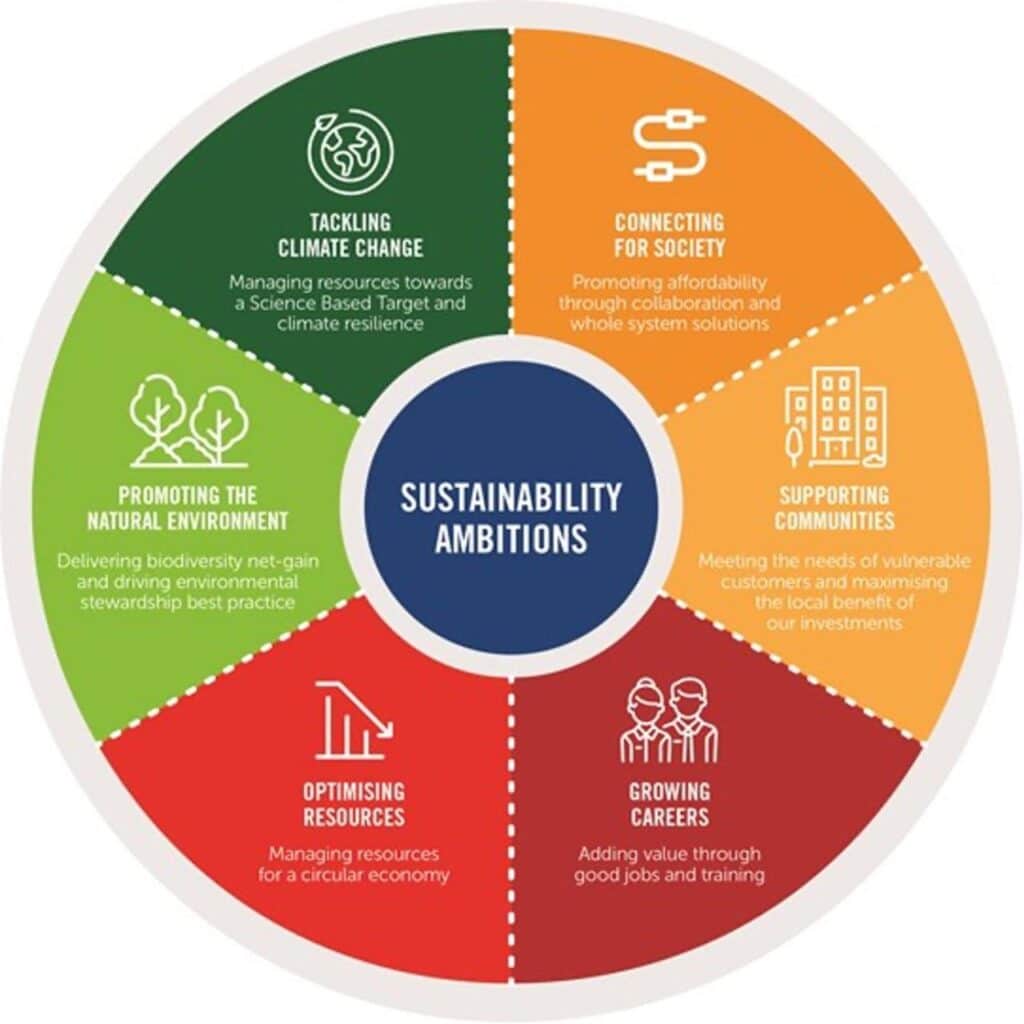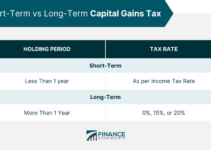How Companies are Integrating Sustainability into their Strategies is a topic that has become increasingly important in recent years, as businesses are facing growing pressure from consumers, investors, and governments to adopt more sustainable practices. This shift towards sustainability is driven by a growing awareness of the environmental and social impacts of business operations, and companies are realizing that incorporating sustainability into their core strategies is no longer a mere trend but a necessity for long-term success.
The growing awareness of environmental, social, and governance (ESG) factors has led to a surge in interest in sustainable investing. Investing in a Sustainable Future explored the opportunities and challenges of investing in companies that prioritize ESG principles, highlighting the potential for both financial returns and positive societal impact.
From reducing their carbon footprint through renewable energy sources to implementing circular economy principles, companies are exploring innovative ways to minimize their environmental impact and contribute to a more sustainable future. This transition involves integrating sustainability into every aspect of their operations, from supply chain management to product design and marketing.
Emerging markets are experiencing a period of significant growth, presenting both opportunities and challenges. The Rise of Emerging Markets: New Opportunities and Challenges discussed the potential of these markets for investors, but also highlighted the need to navigate political and economic risks.
The benefits of this approach are numerous, including enhanced brand reputation, increased customer loyalty, and a more engaged workforce.
The Growing Importance of Sustainability
Sustainability is no longer a niche concern; it’s a mainstream imperative. Global awareness of environmental and social issues is skyrocketing, driven by a confluence of factors including climate change, resource depletion, and social inequality. Consumers, investors, and governments are demanding that businesses take responsibility for their impact on the planet and society.
The Rise of Conscious Consumers
Consumers are increasingly making purchasing decisions based on a company’s sustainability practices. They want to support brands that align with their values and are committed to ethical and environmentally responsible practices. This shift in consumer behavior is creating a powerful demand for sustainable products and services.
- According to a recent Nielsen survey, 81% of global consumers believe companies should be actively working to improve the environment.
- Millennials and Gen Z are particularly vocal about sustainability, and their purchasing power is growing rapidly.
Investors are Embracing Sustainability
Investors are recognizing that sustainable businesses are better positioned for long-term success. They are increasingly looking for companies that are transparent about their environmental and social impact, and that have strong sustainability governance practices. This trend is driving capital towards companies that are leading the way in sustainability.
- ESG (Environmental, Social, and Governance) investing is on the rise, with investors seeking companies that meet certain sustainability criteria.
- Institutional investors, such as pension funds and university endowments, are increasingly incorporating sustainability factors into their investment decisions.
Governments are Setting Sustainability Standards
Governments around the world are enacting regulations and policies to promote sustainable business practices. These regulations can range from carbon emissions limits to requirements for transparency in supply chains. Companies that fail to comply with these regulations face significant risks, including fines and reputational damage.
- The Paris Agreement, signed by nearly 200 countries, aims to limit global warming to well below 2 degrees Celsius.
- The European Union’s Green Deal sets ambitious targets for reducing greenhouse gas emissions and promoting sustainable development.
Companies Facing Public Scrutiny
Companies that engage in unsustainable practices are facing increasing public scrutiny. Social media and online platforms allow consumers to quickly spread information about companies that are perceived as unethical or environmentally damaging. This can lead to boycotts, reputational damage, and financial losses.
- In 2020, a Greenpeace report exposed the use of deforestation-linked palm oil by several major consumer goods companies, leading to widespread public criticism.
- The fashion industry has faced intense scrutiny over its environmental impact, with companies like H&M and Zara facing accusations of unsustainable practices.
A Case for Sustainable Practices
The Patagonia company, a leading outdoor apparel brand, provides a compelling example of the positive outcomes of adopting sustainable practices. Patagonia has long been a champion of environmental activism, and its commitment to sustainability has earned it widespread respect and loyalty among consumers.
The company’s commitment to using recycled materials, reducing its carbon footprint, and advocating for environmental protection has not only enhanced its brand reputation but also boosted its financial performance.
- Patagonia’s “Worn Wear” program encourages customers to repair and reuse their clothing, reducing waste and extending the lifespan of products.
- The company’s “1% for the Planet” initiative donates 1% of its annual sales to environmental organizations.
Integrating Sustainability into Core Business Strategies
Sustainability is no longer an add-on; it’s a core business imperative. Companies that integrate sustainability into their strategies are not only doing the right thing, they’re also gaining a competitive advantage. Sustainability can drive innovation, enhance brand reputation, attract talent, and ultimately, lead to greater long-term profitability.
Key Areas for Integration
Sustainability can be integrated into a company’s strategy across multiple areas, including:
- Supply Chain:Companies can work with suppliers to ensure that their materials are sourced sustainably and ethically. This includes minimizing environmental impact, promoting fair labor practices, and ensuring responsible resource extraction.
- Operations:Companies can reduce their environmental footprint by optimizing energy efficiency, reducing waste, and implementing green building practices. This can also lead to cost savings and improved operational performance.
- Product Design:Companies can design products that are durable, reusable, and recyclable, reducing waste and minimizing environmental impact. This can also enhance product quality and customer satisfaction.
- Marketing:Companies can communicate their sustainability efforts to consumers, building trust and brand loyalty. This can include highlighting eco-friendly features, transparently reporting on environmental and social performance, and engaging in responsible marketing campaigns.
Competitive Advantages of Sustainability
Integrating sustainability into a company’s strategy can create a number of competitive advantages:
- Innovation:Sustainability drives innovation, as companies seek new ways to reduce their environmental impact and create more sustainable products and processes.
- Brand Reputation:Consumers are increasingly choosing brands that are committed to sustainability. Companies with strong sustainability practices can build a positive brand reputation and attract loyal customers.
- Talent Attraction:Millennials and Gen Z are particularly interested in working for companies that are committed to sustainability. Companies with strong sustainability programs can attract and retain top talent.
- Cost Savings:Sustainable practices can lead to cost savings through increased energy efficiency, reduced waste, and improved resource utilization.
Measuring and Tracking Sustainability Performance
Companies need to measure and track their sustainability performance to ensure they are making progress towards their goals. This can be done using a variety of metrics and reporting frameworks, such as:
- Greenhouse Gas Emissions:Companies can measure their carbon footprint to identify areas for improvement and set targets for reducing emissions.
- Water Usage:Companies can track their water consumption to identify areas of inefficiency and implement strategies for water conservation.
- Waste Generation:Companies can measure the amount of waste they generate and set targets for reducing waste and promoting recycling.
- Social Impact:Companies can measure their impact on communities, including employment opportunities, human rights, and community engagement.
Comparing Traditional and Sustainable Business Models
| Feature | Traditional Business Model | Sustainable Business Model |
|---|---|---|
| Focus | Short-term profits | Long-term value creation |
| Resource Use | Linear (take, make, dispose) | Circular (reuse, recycle, regenerate) |
| Impact | Negative environmental and social impact | Positive environmental and social impact |
| Stakeholder Engagement | Limited stakeholder engagement | Broad stakeholder engagement |
| Innovation | Limited focus on innovation | Focus on sustainable innovation |
Examples of Sustainable Business Practices
Numerous companies are demonstrating the power of sustainable business practices. These examples showcase how companies are integrating sustainability into their core operations and creating positive impact.
Renewable Energy Sources
Companies are increasingly adopting renewable energy sources, such as solar, wind, and hydro power, to reduce their reliance on fossil fuels and lower their carbon footprint. This transition to clean energy not only benefits the environment but also provides a hedge against rising energy costs.
- Apple has committed to powering all its operations with 100% renewable energy.
- Google has invested heavily in renewable energy projects, including solar farms and wind farms.
Circular Economy Principles
Companies are implementing circular economy principles to minimize waste and maximize resource utilization. This involves designing products for longevity, reusing and recycling materials, and keeping products in circulation for as long as possible.
The DealBook Summit 2024, Investing in a Volatile Market , focused on strategies for navigating the current volatile market environment. Discussions centered on portfolio diversification, risk management, and the importance of long-term investment horizons.
- IKEA has committed to using only renewable and recycled materials by 2030.
- Patagonia’s “Worn Wear” program encourages customers to repair and reuse their clothing, reducing waste and extending the lifespan of products.
Waste Minimization and Resource Efficiency
Companies are taking steps to minimize waste and promote resource efficiency. This includes reducing packaging, implementing recycling programs, and using sustainable materials.
- Unilever has set a target to halve its environmental footprint by 2030.
- Nestle has committed to reducing its use of virgin plastic by 25% by 2025.
Case Study: Interface
Interface, a global flooring company, provides a compelling example of successful sustainability integration. The company has transformed its operations to become a leader in sustainable flooring solutions. Interface has achieved significant reductions in its environmental impact through initiatives such as:
- Carbon Neutrality:Interface has achieved carbon neutrality across its global operations.
- Closed-Loop Manufacturing:The company has implemented a closed-loop manufacturing system, where materials are reused and recycled.
- Bio-Based Materials:Interface has developed bio-based flooring products using renewable resources.
Interface’s commitment to sustainability has not only reduced its environmental footprint but also enhanced its brand reputation and increased its profitability.
Challenges and Opportunities in Sustainability Integration

While the benefits of sustainability integration are clear, companies face a number of challenges in implementing these initiatives. However, these challenges also present opportunities for innovation and technological advancements. By addressing these challenges and embracing these opportunities, companies can accelerate their journey towards a more sustainable future.
Challenges
Companies may face a number of challenges when implementing sustainability initiatives, including:
- Cost:Implementing sustainable practices can involve upfront costs, such as investing in new technologies or changing production processes. However, these costs can often be offset by long-term savings through reduced energy consumption, waste reduction, and improved resource efficiency.
- Infrastructure:Companies may need to upgrade their infrastructure to support sustainable practices, such as installing renewable energy systems or implementing waste management programs. This can involve significant capital investment and may require government support.
- Regulatory Hurdles:Companies may face regulatory hurdles in implementing sustainable practices, such as obtaining permits for renewable energy projects or complying with environmental regulations. These hurdles can be complex and time-consuming, but they can also be an opportunity for companies to advocate for more supportive policies.
- Lack of Expertise:Companies may lack the expertise to implement sustainable practices effectively. This can require investing in training and development for employees, or partnering with external consultants who have specialized knowledge.
- Consumer Resistance:Some consumers may be resistant to purchasing sustainable products, especially if they perceive them as being more expensive or less convenient. Companies need to educate consumers about the benefits of sustainable products and demonstrate their value proposition.
Opportunities
The challenges of sustainability integration also present opportunities for innovation and technological advancements:
- Emerging Technologies:Advances in technology, such as artificial intelligence, blockchain, and the Internet of Things, are creating new opportunities for companies to develop more sustainable solutions. These technologies can help companies optimize resource use, reduce waste, and improve transparency in supply chains.
- Sustainable Materials:The development of new sustainable materials, such as bioplastics and recycled materials, is creating new opportunities for companies to reduce their environmental footprint. These materials can also offer performance advantages over traditional materials.
- Circular Economy Solutions:The circular economy is a growing trend, with companies developing innovative solutions for reusing, recycling, and regenerating materials. This trend offers significant opportunities for companies to reduce their environmental impact and create new business models.
Stakeholder Roles in Sustainability
| Stakeholder | Role in Driving Sustainability |
|---|---|
| Consumers | Demand sustainable products and services, support companies with strong sustainability practices, and hold companies accountable for their environmental and social impact. |
| Investors | Invest in companies with strong sustainability performance, encourage companies to adopt sustainable practices, and hold companies accountable for their environmental and social impact. |
| Governments | Set regulations and policies to promote sustainable business practices, provide incentives for companies to adopt sustainable technologies, and enforce environmental regulations. |
| Employees | Advocate for sustainability within their organizations, contribute to sustainability initiatives, and hold their employers accountable for their environmental and social impact. |
| Suppliers | Provide sustainable materials and services, adopt sustainable practices in their own operations, and work with companies to create more sustainable supply chains. |
| NGOs and Civil Society | Monitor company performance, advocate for policy changes, raise awareness about sustainability issues, and hold companies accountable for their environmental and social impact. |
Integrating Sustainability into a Company’s Strategy, How Companies are Integrating Sustainability into their Strategies
The process of integrating sustainability into a company’s strategy can be broken down into several key steps:
- Assessment:Conduct a thorough assessment of the company’s current environmental and social impact, identifying areas for improvement.
- Goal Setting:Set ambitious but achievable sustainability goals that align with the company’s overall business strategy.
- Implementation:Develop and implement a plan for achieving the sustainability goals, including specific actions, timelines, and resource allocation.
- Measurement and Tracking:Track progress towards the sustainability goals using appropriate metrics and reporting frameworks.
- Communication:Communicate the company’s sustainability efforts to stakeholders, including employees, customers, investors, and the public.
- Continuous Improvement:Regularly review and improve the company’s sustainability performance, adapting to changing trends and technologies.
The Future of Sustainable Business: How Companies Are Integrating Sustainability Into Their Strategies
The future of sustainable business is bright, with a number of exciting trends and innovations on the horizon. Companies that embrace these trends and leverage these innovations will be well-positioned to thrive in a world that is increasingly demanding sustainable solutions.
The global economy is facing a confluence of challenges, including persistent inflation and the potential for recession. Inflation, Recession, and the Future of Finance explored the implications of these factors for the financial industry, including the need for robust risk management and the potential for new financial products and services.
Emerging Trends and Innovations
- Circular Economy:The circular economy is poised to become the dominant business model of the future. Companies will focus on designing products for longevity, reusing and recycling materials, and keeping products in circulation for as long as possible.
- Renewable Energy:Renewable energy sources, such as solar, wind, and hydro power, will become increasingly affordable and accessible. Companies will transition to clean energy sources to reduce their carbon footprint and lower their energy costs.
- Sustainable Materials:The development of new sustainable materials, such as bioplastics and recycled materials, will offer companies new opportunities to reduce their environmental impact and enhance product performance.
- Digital Technologies:Digital technologies, such as artificial intelligence, blockchain, and the Internet of Things, will enable companies to optimize resource use, reduce waste, and improve transparency in supply chains.
- ESG Investing:ESG investing will continue to grow, with investors seeking companies that meet certain sustainability criteria. Companies with strong sustainability performance will attract more capital and be better positioned for long-term success.
The Impact of Emerging Technologies
Emerging technologies will play a critical role in driving sustainable change. For example, artificial intelligence can be used to optimize energy consumption, reduce waste, and improve resource efficiency. Blockchain technology can enhance transparency in supply chains and ensure that materials are sourced sustainably.
The DealBook Summit 2024, The Role of Government in Economic Recovery , examined the role of government policy in stimulating economic growth and addressing key challenges. Discussions focused on fiscal and monetary policies, infrastructure investment, and the importance of international cooperation.
The Internet of Things can enable companies to monitor their environmental impact in real time and make data-driven decisions.
The DealBook Summit 2024, Decoding the Global Economic Outlook , provided a platform for prominent figures in the financial world to discuss the current economic landscape and potential future trajectories. The summit explored key factors influencing global growth, including geopolitical tensions, inflation, and technological advancements.
Collaboration and Partnerships
Collaboration and partnerships will be essential for driving sustainable change. Companies will need to work together with governments, NGOs, and other stakeholders to develop innovative solutions and address the challenges of sustainability. This includes sharing best practices, collaborating on research and development, and advocating for policy changes that promote sustainability.
A Vision for a Sustainable Future
The future of sustainable business is a world where businesses are integral to creating a more sustainable world. Companies will be seen as partners in solving global challenges, not as contributors to them. Sustainability will be embedded in every aspect of business, from product design to supply chain management to marketing and communications.
Businesses will be held accountable for their environmental and social impact, and they will be rewarded for their commitment to sustainability.
Final Review
The integration of sustainability into business strategies is a complex and evolving process, but the rewards are significant. By embracing sustainable practices, companies can not only contribute to a healthier planet but also gain a competitive advantage, attract talent, and build a more resilient and responsible business model.
The future of sustainable business is bright, with technological advancements and innovative solutions paving the way for a more sustainable future. Companies that embrace this shift will be well-positioned to thrive in the years to come, leading the charge towards a more sustainable and equitable world.
Q&A
What are the key drivers of sustainability in business?
The key drivers of sustainability in business include increasing consumer demand for sustainable products and services, growing investor interest in ESG (environmental, social, and governance) factors, regulatory pressures, and a rising awareness of the environmental and social impacts of business operations.
How can companies measure their sustainability performance?
Companies can measure their sustainability performance using a variety of metrics and reporting frameworks, such as the Global Reporting Initiative (GRI), the Sustainability Accounting Standards Board (SASB), and the United Nations Sustainable Development Goals (SDGs). These frameworks provide standardized metrics and guidelines for reporting on environmental, social, and governance performance.
The DealBook Summit 2024, Key Takeaways for Investors , provided insights for investors seeking to navigate the complex economic landscape. Key themes included the importance of diversification, risk management, and understanding the impact of geopolitical events on global markets.
What are some examples of sustainable business practices?
The rapid advancement of artificial intelligence (AI) and automation is transforming the future of work. The Future of Work: AI, Automation, and the Skills Gap examined the implications of these technologies on employment, skills development, and the need for education and training programs to address the emerging skills gap.
Examples of sustainable business practices include using renewable energy sources, reducing waste and promoting resource efficiency, implementing circular economy principles, sourcing sustainable materials, and investing in green technologies.
What are the challenges and opportunities in integrating sustainability into business strategies?
Challenges include the cost of implementing sustainable practices, infrastructure limitations, regulatory hurdles, and a lack of awareness or commitment within organizations. Opportunities include the potential for innovation and technological advancements in sustainable solutions, the creation of new markets and business models, and the ability to attract and retain top talent.
What is the role of collaboration in driving sustainable change?
Collaboration is essential for driving sustainable change. Companies can work together to share best practices, develop new technologies, and advocate for policy changes. Partnerships with NGOs, governments, and other stakeholders can also be crucial for advancing sustainability initiatives.









